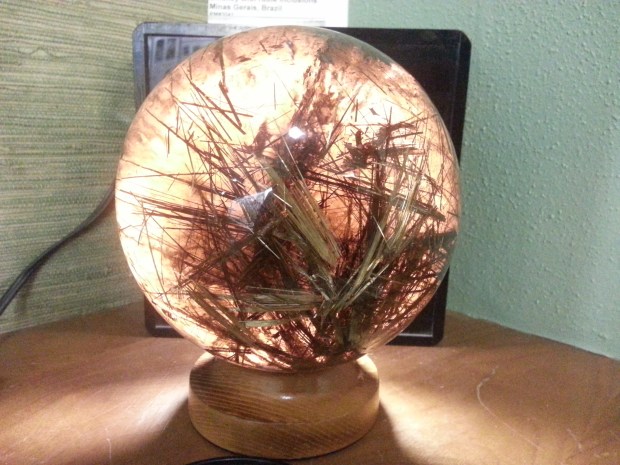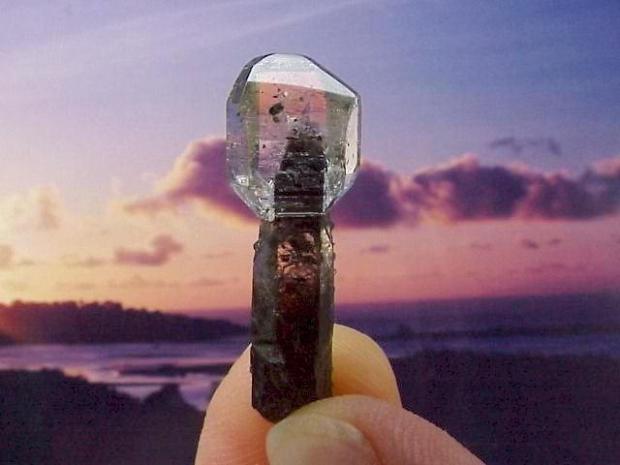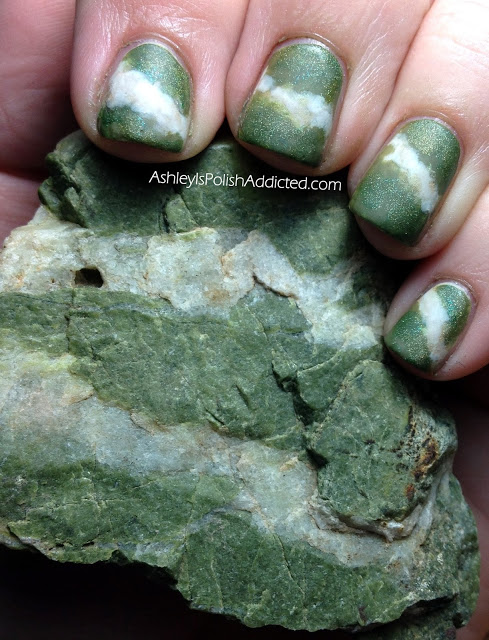 A fun show opportunity next month. Mountain Home is in the north-central part of Arkansas and is only 4 and a half hours away, same as a trip to St. Louis. If you like quartz, Arkansas is famous for it and I’m sure you will see lots of it. I also hear the show will have plenty of air conditioning!
A fun show opportunity next month. Mountain Home is in the north-central part of Arkansas and is only 4 and a half hours away, same as a trip to St. Louis. If you like quartz, Arkansas is famous for it and I’m sure you will see lots of it. I also hear the show will have plenty of air conditioning!
quartz
Door Prizes
When you come to the show, don’t forget to enter the drawings for door prizes.
Kids’ Drawing:

Dinosaur Model with Real Tooth

Cactus Quartz
Rutile quartz

Photo by Stephanie Reed
Rutile quartz is quartz that contains rutile inclusions. Rutile is made of titanium dioxide and usually forms long, thin needles. It is most commonly found in quartz, though it can also be found in sapphires. The inclusions are usually gold in color and can be seen in dense parallel fibers or as scattered needles. You can see both in this specimen.
This rutilated quartz sphere is smoky quartz with rutile inclusions from Minas Gerais, Brazil. It is on display at the Rice Museum in Hillsboro, Oregon near Portland, Oregon. If you are in the area, we highly recommend this museum.
How Amethyst Cathedrals are Formed

Amethyst cathedral at the Sutton Museum. Photo by Stephanie Reed
Article by Dr. Bill Cordua, University of Wisconsin-River Falls
Have you ever been to a show and seen enormous amethyst geodes or crystals 3-5 feet or more in height? The tubular geodes are lined with deep purple gemmy amethyst crystals. How do such wonders form?
These excellent geodes come from a region along the Brazil-Uruguay border. The genesis of deposits on the Brazil side of the border has recently been extensively researched by an international team of geochemists lead by H. Albert Gilg of Techniche University Munchen in Germany (Gilg, et. al., 2003). The geodes are mined from several lava flows belonging to the Parana Continental Flood Basalt Province. This was one of the largest outpourings of basalt lava known. An estimated 800,000 cubic kilometers of lava extruded over an 11 million year time span. For comparison, this would be enough to cover Minnesota with a pile of basalt lava over 2 miles high. The lava outburst occurred as part of the opening of the South Atlantic Ocean during Cretaceous time about 130 million years ago. Of all these flows, however, only a few are known to host amethyst cathedral geodes.
Gilg et al. proposed a 2-stage model for their formation. In the first stage the large hollows form. This was caused as volcanic gases were released from certain lavas as they cooled. Not every lava has enough dissolved gas to form such big openings. As gas bubbles emerged from the congealing lava (much as bubbles emerge when beer or soda pop is poured) they coalesced as they rose. The lava was cooling fast too, and soon became so thick and sticky that bubbles quite rising and were trapped. The bulbous to tubular shapes thus point towards the top of the flow, a fact easily seen when the geodes are in place in the mines. These cavities, though, were empty of crystals.
The second stage was the formation of the amethyst, plus celadonite, calcite and gypsum fillings. An important clue to this event is the presence of small gas and liquid bubbles (called fluid inclusions) trapped within these minerals. These are samples of the mineral-forming liquids caught as the crystals grew. Fluid inclusions are treasure troves of information when studied with sophisticated instruments. Analyses of the fluid inclusions in the amethyst, calcite and gypsum show them to be filled with slightly salty water. This water had a temperature of no more than 100 degrees C, and possible less than 50 degrees C, during mineral formation. These cannot be fluids related to the magma that formed the lavas.
What was the source of these fluids? An amazing story unfolds from the radiometric dating of the minerals. The basalts formed about 130 million years ago, but the green celadonite, which makes up the rinds of the geodes, formed about 70 million years ago. For 60 million years these enormous cavities sat empty of crystals. Trace element data from the fluid inclusions gives another important clue to the source of the mineral-forming fluid. Below the lavas is a large aquifer (the Botucatu aquifer) filled with ground water that closely resembles the fluid inclusion liquids. Uplift and tilting of the area about 70 million years ago would force water out of the aquifer into the porous areas of the overlying lava. In the lava flow these waters would have found volcanic glass. Glass breaks down over geologic time and makes silica and other chemicals available in a form that is readily soluble in water soaking through the rocks. The water carried these chemicals into the cavities, where the amethyst and other minerals grew due to cooling and pressure release.
The special combination of geologic circumstances, unfolding over millions of years, is not often duplicated. Understanding the process gives geologist tools to prospect more efficiently for these wonders.
Reference:
Gilg, H. et. al, 2003, “Genesis of amethyst geodes in basaltic rocks of the Serra Geral Formation (Ametista do Sul, Rio Grande do Sul, Brazil): a fluid inclusion, REE, oxygen, carbon, and Sr isotope study on basalt, quartz and calcite” Mineralium Deposita vol. 38, p. 1009-1025.
The Glacial Drifter 08/2011, The Gemrock 06/2015
Scepter Quartz
Article by Amir Chossrow Akhavan, http://www.quartzpage.de/gro_text.html
A scepter quartz is often defined as a quartz crystal that has a second generation crystal tip sitting on top of an older first generation crystal. The second generation tip typically becomes larger than the first generation tip, but might also become smaller. A scepter can be shifted sideways and does not need to be centered on the first generation tip.
However, there is a problem with a definition that is based on the idea of a second generation: scepters do not only occur as a second generation on an older crystal, they also form stacks of parallel grown crystals that developed at the same time, very often as skeleton quartz. Another difficult case are reverse scepters in which the scepter is smaller than the underlying tip. Here the smaller tip very often does not show any properties that clearly distinguish it from the rest of the crystal and that would justify calling it a second generation. Instead, the crystals often appear to have grown continuously into the reverse scepter or multiple scepter shape.
In all cases, the scepter develops from the already present crystal lattice of the crystal underneath. Thus, to be a scepter quartz, the “second generation” crystal’s a- and c-axes need to be oriented parallel to the respective axes of the “first generation” crystal; just one crystal on top of another doesn’t make it a scepter. Such a crystallographically well defined intergrowth of different minerals is called an epitaxy. In a sense, a scepter represents an epitaxy of quartz on quartz, and because it is the same mineral, it is sometimes called an autotaxy.
Scepters are quite common in certain geological environments. Amethyst from alpine-type fissures in igneous and highly metamorphosed rocks usually occurs as scepters on top of colorless or smoky crystals (not only in the Alps, but for example also in southern Norway or northern Greece). Here, the amethyst generation grew at lower temperatures than the first generation quartz. The same growth form can be observed in pegmatites and miaroles in igneous rocks (for example, amethyst scepters from the Brandberg, Namibia, or from pegmatites in Minas Gerais, Brazil).
Scepters, or to be precise, the “second generation” part of a scepter quartz that defines it, commonly have a number of morphological properties:
- Scepters are commonly of normal habit and are never tapered. The underlying “first generation” crystal may show a Tessin habit, but the scepter on it will not.
- Scepters tend to assume a short prismatic habit. An apparent exception are reverse scepters and the normal scepters associated with them, which may occur as elongated extensions of a “first generation” crystal, but then in the shape of multiple stacked scepters.
- Many scepters show only a weak striation on their prism faces, sometimes it is even missing.
- Scepters do not show split growth patterns.
- Scepters rarely show trigonal habits with very small or missing z-faces. An exception are reverse scepters and the normal scepters associated with them.
- Scepters are often associated with skeleton growth forms (skeleton or window quartz).
- Scepters commonly show a color, color distribution, diapheny and surface pattern that is markedly different from the underlying “first generation” crystal. Often they are more colorful and transparent. Amethyst scepters are very common, smoky quartz scepters -often with uneven color distribution- are common. An exception are reverse scepters and the normal scepters associated with them which seem to either not differ from the “first generation” or show gradual transitions.
- Summarizing the exceptions above: Reverse scepters and the normal scepters associated with them seem to have a different set of properties.
Formation
One theory is that a scepter forms when crystal growth is interrupted and parts of the crystal are covered with some material that inhibits further growth. The growth inhibiting material might be only present as a very thin layer and invisible. The very tip of the crystal or the entire rhombohedral faces remain free of that material, and should the conditions change again, the crystal continues to grow from the tip.
One of the problems with that theory is that you would expect to see a larger number of “double”, “triple” or “quadruple scepters”, specimen in which the growth had been interrupted several times and in which scepters with slowly changing habits are stacked. In nature, however, you see a strong dominance of “simple” scepters that consist of just a prism with “a single head”. If you see multiple scepters, then often alongside simple scepters, although multiple changes in the environment should have affected the morphology of all of them equally.
Another problem is that you would not expect to see a fully-grown scepter that encloses the former tip like an onion if the crystal simply started growing from a single point on the surface of the tip. Such a crystal would finally grow into an elongated crystal and would at best assume the shape of a reverse scepter.
As I’ve mentioned, amethyst from igneous and metamorphic rock locations all over the world predominantly occurs as scepters. Even if you just take Alpine locations, it is hard to imagine that the environmental conditions in all those locations have undergone a single sudden change that led to a temporary growth inhibition on the crystals, followed by a very distinctive growth pattern, the formation of scepters.
The internal structure of scepters from Alpine-type fissures (and of scepters in general) is perhaps always lamellar, as opposed to the macromosaic structure of many quartz crystals from Alpine-type fissures. Quartz crystals with a macromosaic structure may carry a scepter, but the scepter will then show lamellar structure.
Mineral Nail Polish
There are a lot of ways to express your love for rocks, whether you have a display case in your home, a collection of geology maps and field guides, you go to gem and mineral shows, or even bake a rock cake. Ashley has a passion for nail polish and had a rock collection as a child, so she combined the two by painting her nails to look like this specimen of quartz and green shale. I love the way she used multiple shades of green and white to perfectly recreate the color of the shale and make the “quartz” part of her fingernails look translucent. Go to her blog post to find out the specific kinds of nail polish she used.
Trolling For Geodes
Mozarkite
The Mozarkite Society of Lincoln, MO is having their annual rock show right now, from September 19-21. There is FREE admission! It is at the Lincoln City Park, Shelter House, behind Casey’s. Hours: Fri 9-5, Sat 9-4, Sun 9-4. Go to www.mozarkite.com for more information.
Mozarkite is a variety of quartz that comes in many colors including red, pink, purple, blue, and white, usually in pretty swirls. The name comes from Missouri and Ozarks, which is where mozarkite is often found. It is considered a semiprecious stone because it has a hardness of 7.5-7.75 on the Mohs scale, making it hard enough to be polished and made into jewelry. Mozarkite has been Missouri’s state rock ever since 1967.

Photos from the Mozarkite Society of Lincoln. http://www.mozarkite.com/samples.htm
Yellow rutile stars in quartz

Photo from: http://gem-sphalerite.com/inclusions-in-quartz-all-varieties/117-rutile-stars-inclusions-quartz-6864
This clear colorless quartz with yellow rutilations is too pretty not to share.


